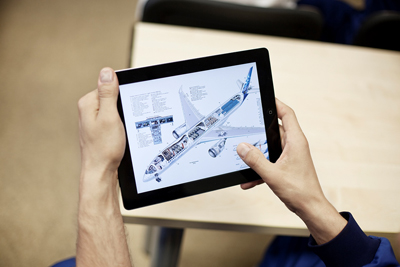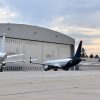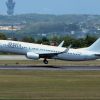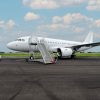 Currently up to 40% of the world’s aircraft fleet is leased and the figure rising. This has granted carriers more flexibility in fleet planning and better financial ratios. However, when it is time for an airline to return the equipment to its lessor and prepare it for the next operator, the process can stretch out to several times the normal period, and costs mount as time passes.
Currently up to 40% of the world’s aircraft fleet is leased and the figure rising. This has granted carriers more flexibility in fleet planning and better financial ratios. However, when it is time for an airline to return the equipment to its lessor and prepare it for the next operator, the process can stretch out to several times the normal period, and costs mount as time passes.
Considering the instability of today's aviation industry, an increasing proportion of commercial aircraft are leased rather than owned by airlines that operate them. However, while it certainly brings about major benefits for carriers as concerns budget planning, the lessees may encounter significant headaches when the aircraft have to be returned.
The first major issue is process planning, which should ideally start at least a year before aircraft return. However, while normally a well-planned lease return should take six to eight weeks, some operators fail to act until three months prior to the deadline, often ending up with inadequate records or insufficient maintenance. As a result, ill-planned returns can take from six months to a year, and cost the lessee over $3.5 million, not to mention maintenance-related expenses.
“There are many reasons why end-of-lease processes are so expensive. However, while failing to plan the procedure properly usually accounts for most of the wasted time, there are other issues that have to be addressed properly as well. For instance, one of the biggest problems is that airlines’ record-keeping staff often lacks the time or expertise to meet the high and possibly different standards of documentation required for lease return. At the same time, if a form is missing or lost, a wasteful component overhaul is required. As a result, many even consider hiring an outside company a few months ahead of the return to assemble the required documentation,” says Kestutis Volungevicius, Head of Engineering and Training at FL Technics.
Many experts view different national regulatory requirements for maintenance, technical status and records as a major cost driver. For instance, using paper-based  documentation for aircraft lease transactions adds several hundred thousand dollars (an average of $350 000 per plane) to each deal. Moreover, just reviewing new national requirements before a transfer takes time and money thus making the transition even more difficult. At the same time, many agree that uniform regulation would ease the transfers significantly.
documentation for aircraft lease transactions adds several hundred thousand dollars (an average of $350 000 per plane) to each deal. Moreover, just reviewing new national requirements before a transfer takes time and money thus making the transition even more difficult. At the same time, many agree that uniform regulation would ease the transfers significantly.
“The lack of standardized, digitized records often becomes a major source of problems. Paper documents on older aircraft fill up to 60 boxes, and handling them is expensive. As a result, sometimes an aircraft handover from or to a leasing company can be delayed by several months simply because of the issues with the required documentation,” says FL Technics’ Head of Engineering and Training.
According to Kestutis, globally accepted digital documentation would hugely facilitate the relevant processes. However, while European carriers are slowly moving ahead with digitized records, the fastest growing markets, such as China and Southeast Asia, lag behind. “Simply using scanned copies of paper certifications already saves considerable time and cost, but moving to fully digital systems, allowing to fill standard documents in a standard format, would make a huge difference. In the meantime, while EASA and FAA have some provisions for digital records, the formats are far from universal. Of course, the switch won’t happen at a blink of an eye. However, it seems like standardization and digitization is currently the only direction possible,” concludes Kestutis Volungevicius, Head of Engineering and Training at FL Technics.





